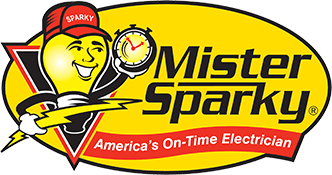
Electrician Tips: Technical And Safety Considerations To Keep In Mind When Choosing The Best Whole-House Surge Protector For Your Home | Wilmington, NC
Photo By nerosu at istock
An unstable electrical supply poses a danger to homes and structures. When electrical surges occur, they send a high voltage surge into your home and could cause thousands of dollars in damage. That’s why most homeowners install whole-house surge protectors to block excess voltage or current that could damage the entire circuit.
While selecting a whole-house surge protector for your house, it’s crucial to involve an electrician in Wilmington, NC, who understands the features of whole-home surge protectors to make an objective decision. Below are some considerations that will guide you in selecting the best whole-house surge protector for your home.
UL Certification
When searching for a whole-house surge protector, always ensure that it’s UL listed for safety purposes. Currently, L 1449 3rd Edition is the accepted standard for surge-protection units. In layman’s terms, this means that UL-listed devices have been put through various tests to ensure they are safe to use and will not create any fire hazards or shock throughout their entire life.
Whole-house surge protection gadgets must also be labeled as transient voltage surge suppressors (TVSS). A UL 1449 on a surge protection device means that it has covered various aspects of the device, including the level of protection provided, the current needed to trip it, and how fast it responds to a surge.
Plus, an UL 1449 approval indicates that the product has undergone tests for short and long-term over-voltage survival, enclosure adequacy, ground leakage, among others. A surge protector can only pass this test and become certified if it can deliver results within the stipulated limits as many as 15 times.
If you need a surge protection device that meets the highest safety standards, you can consider devices rated by the Canadian Standards Association (CSA). Therefore before calling an electrician in Wilmington, NC, to come and mount any surge protection device, always do due diligence to ensure that it has the UL certification.
Nominal and Maximum Continuous Operating Voltage
Although this may be a little technical for any homeowner, you can consult with a qualified electrician regarding nominal or maximum operating voltage for your home’s outlet. For starters, in the United States, the nominal voltage is 110 or 120 volts while in other countries, it can range from 220 to 240 volts.
Nominal voltage means the voltage that the home’s outlets provide. Electricians have noted the tendency of whole-house surge protectors to change to either frequently.
On the other hand, the maximum continuous operating voltage (MCOV) is the quantity of voltage that a surge protection gadget can let pass without tripping. If your device tripped each time the power hit 121 volts, it would cause it to wear out quickly.
That’s why manufacturers set the MCOV a little higher to offer a margin of between 15 and 20 percent. For instance, a 120-volt surge protection device with a 20 percent margin will have an MCOV of 144 volts.
NEMA Enclosure Type
Before mounting any surge protector, it’s crucial to ensure that it has a suitable enclosure to protect it from ice, dust, water leakage, oil drippage, dirt, or any chemical element. That’s where National Electrical Manufacturers Association (NEMA) enclosures come in. It ensures that all electrical components are protected from damage.
NEMA has developed a standardized rating system covering electrical device enclosures in the United States. It sets out the environments where a specific device should be mounted and used safely. While shopping for your whole house surge protector, knowing two aspects of NEMA ratings is essential.
The first is the protection that the enclosure provides to the equipment against dirt and other elements, and the other is the protection offered to persons who come into contact with the enclosure.
When it comes to whole-house surge devices, protectors differ significantly. If the surge protector has a NEMA 1 rating, which is the lowest, it means that the enclosure is for indoor use and offers minimal protection against likely electric shocks.
On the other hand, a product rated 4X means that it can be used indoors or outdoors and provides protection from rain, windblown dirt, and sand. Homeowners are advised to avoid buying surge protection devices without a NEMA rating.
Voltage and Surge Protection Ratings
No matter where you live, you cannot avoid power surges. And if your home lacks the appropriate protection, the surge can fry your electronic devices. That’s why you need not only a surge protector but also the right one with a higher rating. In this case, it will be a good idea to consult with an electrician to know the precise voltage rating of your whole-house surge protector.
Some manufacturers mislead homeowners by using vague terms such as “high voltage protection,” which could mean something different to folks shopping for these devices.
UL and CSA calculate voltage protection ratings in their testing, but they may not be notable within the device details. Instead, you’ll find out that the surge-protection rating is commonly highlighted in the product. This is the electrical current that can be absorbed and is measured kiloAmps (kA).
Depending on the device type, the minimum current that can be absorbed is usually 10kA (10,000 amps). If you want nothing but the best whole-house surge protector for your home, you can go to the one that’s rated 30kA and above.
Due to extreme weather conditions, such as storms it would be a good idea to select a whole-house surge protector rated 30kA or more that’s equipped to handle the worst storms.
Installation
A whole-house surge protector can be labeled either a type 1 or type 2 gadget. But some can be labeled as both. Surge protector devices are fixed installations that are hardwired into your home’s electrical system to offer surge suppression from inside and outside the house.
Type 1 whole-house surge protector is mounted before it enters your home. Its purpose is to block high surges from entering your home but allows small surges to pass through. A licensed electrician must install a type 1 whole-house surge protector, and the utility company has to be directly involved.
On the other hand, any homeowner with basic knowledge of the main breaker panel can install a type 2 whole-house surge protector. It is mounted on the load side of the unit or after electricity has entered the electrical service panel.
You must attach these units to a circuit breaker situated within the breaker panel.
If you are unsure how to install type 2 whole-house surge protectors, it’s crucial to involve a certified and experienced electrician in Wilmington, NC.
Rely on Qualified Electricians From Mister Sparky of Wilmington
At Mister Sparky of Wilmington, we can help you get the whole-house surge protector that’s suitable for your home and install it properly. We have licensed electricians to guide you every step of the way to ensure all your needs are met. Additional services include outdoor lighting, electrical inspections, installation, and repairs, and emergency solutions to residential and commercial property owners. Call us today.

